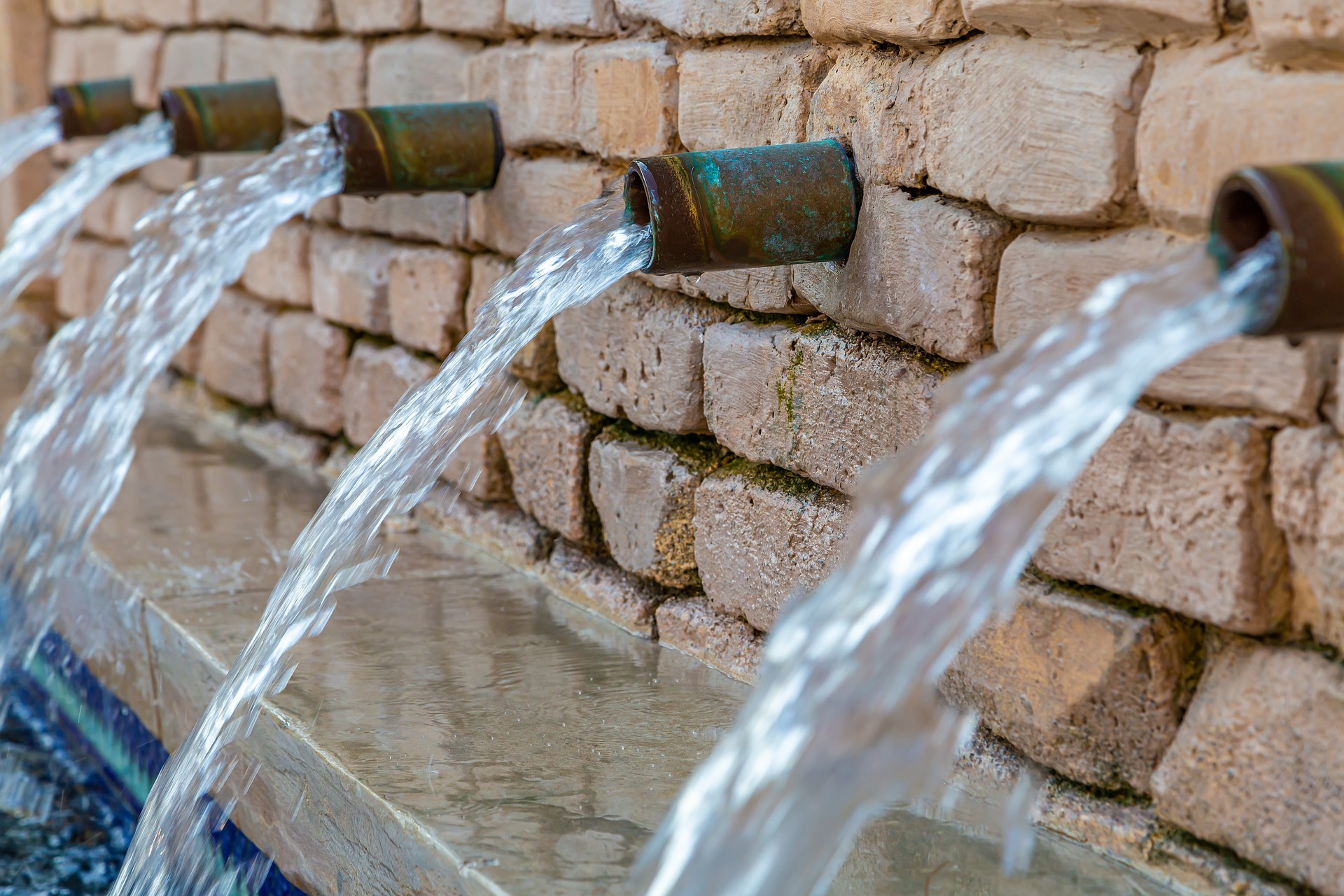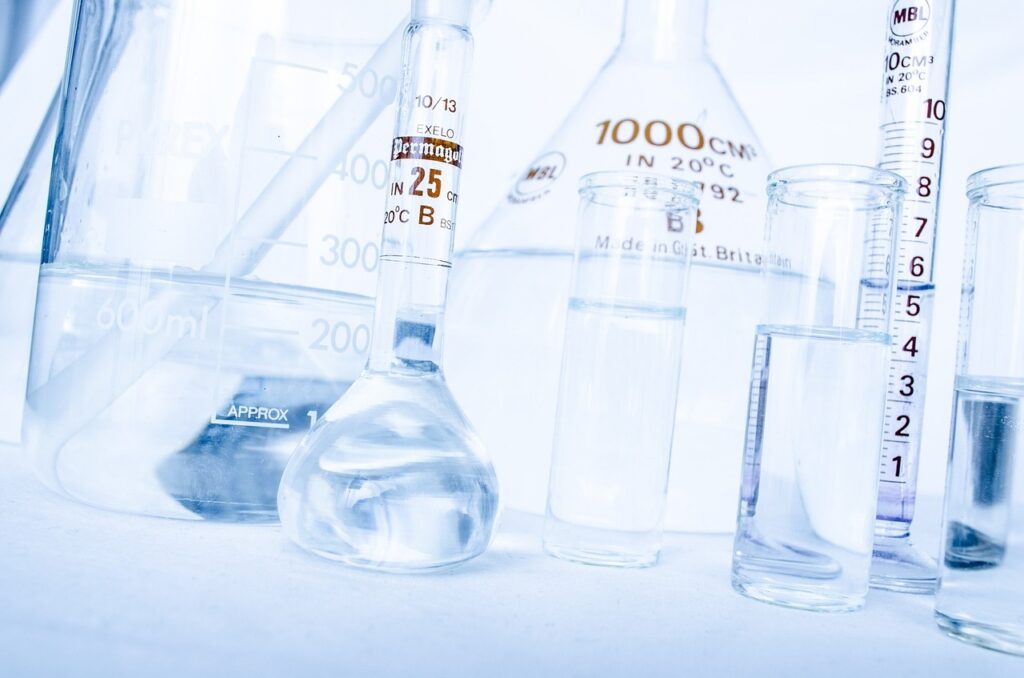Water is one of the big four ingredients for making beer and its importance cannot be understated. Water makes up a majority of the beer we drink and its composition, pH and source have a massive impact on the taste and quality of our brew. In this Ingredient Spotlight we’re going to explore the world of water: why it’s important for brewing, the science of water and how to best use water in your home brew set up.
Water into beer
Surprisingly, many homebrewers overlook water as an ingredient for beer. Of course we all use water in our brews…but how often do we really think about how the specific water coming out of our tap is affecting our brew? As a home brewer, my answer for many years was “I don’t”. I suspect the answer is similar for many other home brewers.
However, if you’ve ever chatted with a commercial brewer or done a tour of a brewery you’ll see that water is taken very seriously. You hear a lot of terms thrown around like pH, reverse osmosis, demineralisation, filtration, composition etc. While amateurs don’t need the same level of expertise as people making a commercial product, we do need to consider some basic water chemistry if we want to make tasty, consistent beer.
Beer is essential for every step of the beer making process. From irrigating the grains we use to recipes to cleaning – there is no escaping the importance of water! According to a joint report released by SABMiller and the Worldwide Fund for Nature, beer production is one of the most intensive industries for water use. In the most efficient brewhouses in Europe, it takes over four litres of water to make a single litre of beer. When you add in water use from irrigation of ingredient crops and logistics, that figure balloons to well over 100 litres of water to produce one litre of beer. Thankfully, most of the biggest names in brewing have identified water consumption as an area for improvement their strategic plans and goals.
If you’re reading this, you’re more likely to be a home brewer than a brewer at Heineken. So how does water affect us amateurs? What steps can we take to improve how we use water in brewing? Let’s have a look…
Contaminants and chlorine
At the most basic level, we need to make sure our water is clean and free from debris and contaminants before we use it in brewing. If using well water or rainwater, it will probably need to be filtered (using a charcoal filter, screen filter or similar).
If you are using water from the municipal supply, there will likely be trace amounts of chlorine in the water to keep bugs out. Removing the chlorine from our water is an easy win for improving the quality of our brew. Without chlorine we will achieve more rigorous yeast growth and avoid off flavours in the brew. Removing chlorine is surprisingly simple: simply boil and cool your water before use. An even simpler solution is the addition of sodium metabisulphite, commonly sold as campden tablets to your brew water. This sulphur based product is safe, easy to dose (it’s hard to use too much) and expels chlorine and chloramine as a gas almost instantly after being crushed and added to the water.
Removing chlorine and contaminants is only part of the story. Next, let’s have a look at the basic chemistry behind water and how it affects our beer.
Water composition and testing
The water coming out of your tap at home will be different to the water coming out of someone else’s tap in a different city, region or country. The geology of an area and local guidelines for treating drinking water means that tap water varies significantly from place to place. Interestingly, the development of different beer styles depended on the composition of the water available: for example stouts from the area known now as the UK developed because they are more suited to the hard water found there (i.e. a higher pH).
The composition of water is dictated by its pH (i.e. how acidic or alkaline it is) and the presence and ratios of some basic minerals: calcium, chloride (not to be confused with chlorine or chloramine), magnesium, sodium, and sulphate. The amount of each of these components will affect how our finished product will taste and even feel in our mouth.
By understanding the composition of our brew water, we can put in certain additives to create a water profile that is appropriate for the style of beer we are brewing. For example, if we wanted to make a Czech pilsner we would likely try to mimic the water available in the place that this style originated.
At this stage, you might be thinking “James, I am but a simple home brewer not a chemist. How could I possibly change the chemical composition of my water?”
Fear not! People far smarter than I have made software that will tell you what additions you need to make to your brew water to achieve the water profile for a given style. But, for this to work, you’ll need to tell the software what the baseline is. You’ll need to get your water tested…
Testing water can be done at home with a test kit (difficult for the average punter) or you can request an analysis for the tap water in your area. This analysis will breakdown the composition of calcium, chloride, magnesium, sodium and sulphate. It will also list the pH. If you are a home brewer, it is good to get a new analysis every few months as it is not uncommon for the composition to change over time.
Adjusting your water
Adjusting your brew water to suit the style you are brewing involves some fairly complex chemistry. Thankfully, there is a bunch of software (free and paid) that can help with this process. A quick Google search will reveal a suite of options from pre-programmed spreadsheets all the way through to proprietary software for commercial breweries. If you are an intermediate home brewer you are likely already using software in some capacity – a “water chemistry calculator” may be already included in the suite you are using.
Once you have your baseline water composition from your analysis, you need to input that data into your brewing software. Typically you will also choose the style you want to brew and then the software will then provide you with the additions you will need to make to your water in order to get the optimal composition for the style you’re making.
Typical minerals and acids used to adjust your water per your brewing software are listed below. These additions are all safe if handled correctly but it is important to follow all relevant precautions as listed on the product packaging. Safe practices for chemical handling is important – even if the chemicals are relatively benign.
Potassium metabisulphite: used for removing chlorine from your brew water. Commonly sold as campden tablets.
Calcium sulphate (gypsum): used to increase calcium and sulphate. Lowers mash pH.
Calcium chloride: used to add calcium and chloride to your water. Lowers mash pH.
Magnesium sulphate (epsom salt): increases magnesium and sulphates in your water.
Phosphoric acid and lactic acid: used to lower pH of the water
Sodium bicarbonate (baking soda): increases pH of the water
Calcium carbonate (chalk): increase alkalinity and adds a small amount of calcium
It is important that when dealing with the additives above, you use an accurate scale – you will be operating in fractions of grams/ ounces so accuracy is important.
Water is a crucial part of the beer making process – from the growing of crops to cleaning the brewery. Understanding the composition of the water we are using is a great way to improve our home brew. Although water chemistry can be daunting at first glance, there are many resources and programs available to help us to get the perfect brew water.
Cheers!





